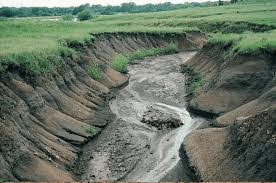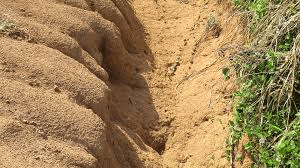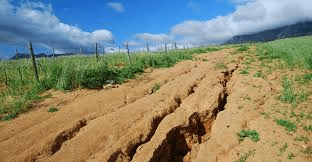Soil erosion is a significant environmental issue that affects agricultural productivity, water quality, and ecosystem health. As topsoil is lost, nutrients vital for plant growth diminish, leading to reduced crop yields and increased pollution in nearby waterways.
Understanding effective strategies for soil erosion control is essential for sustainable land management. This article explores various methods to prevent soil erosion, highlighting the importance of combining vegetative and structural techniques.
Understanding Soil Erosion
Soil erosion refers to the removal of the top layer of soil, which is often the most fertile layer, rich in nutrients essential for plant growth. This process can occur naturally through wind and water or be accelerated by human activities like deforestation and poor farming practices. Soil erosion can be classified into two main types: gradual and sudden. Gradual erosion occurs over time, while sudden erosion happens rapidly during heavy rainfall or storms.
Erosion begins with rain impacting the soil surface, dislodging particles. Runoff water can carry these particles away, and wind can pick up loose soil, particularly in dry areas. The rate of erosion is influenced by factors such as soil type, vegetation cover, and land slope. Understanding this process is crucial for developing effective erosion control strategies.
Causes of Soil Erosion

Several factors contribute to soil erosion, including:
1. Water: Heavy rainfall can wash away soil, especially on slopes. Raindrops hitting bare soil displace particles, leading to erosion.
2. Wind: In dry, bare areas, wind can blow away loose soil particles, particularly in arid regions.
3. Poor Land Management: Overgrazing, deforestation, and improper farming techniques can strip the land of protective vegetation.
4. Urban Development: Construction can remove soil cover, increasing erosion by preventing water from soaking into the ground.
5. Natural Disasters: Floods and hurricanes can cause significant soil loss rapidly, washing away large areas of topsoil.
By identifying these causes, landowners can take proactive steps to prevent erosion, such as maintaining vegetation cover and adopting sustainable practices.
Importance of Soil Erosion Control
Controlling soil erosion is vital for several reasons:
1. Protecting Fertile Land: Erosion removes nutrient-rich topsoil essential for crops, helping maintain agricultural productivity and food security.
2. Preventing Water Pollution: Eroded soil can carry fertilizers and pesticides into waterways, harming aquatic life. Erosion control reduces pollution risks.
3. Reducing Sedimentation: Erosion contributes to sediment buildup in rivers, affecting habitats and water quality.
4. Preserving Ecosystems: Healthy soil is crucial for plant growth, which supports wildlife. Preventing erosion helps maintain biodiversity.
5. Enhancing Climate Resilience: Healthy soils store carbon, mitigating climate change effects. Erosion control supports this function, contributing to environmental resilience.
Understanding these benefits encourages landowners and farmers to implement erosion control measures.
Read Also: The Variety of Fish Body Shapes
Types of Soil Erosion Control Methods

Erosion control methods can be categorized into three main types:
1. Vegetative Methods: Using plants to protect the soil, these methods are often effective and sustainable.
2. Structural Methods: These include physical barriers like terraces, dams, and retaining walls to reduce soil movement.
3. Management Practices: Modifying land use and farming techniques to minimize erosion, such as crop rotation and reduced tillage.
By understanding these categories, landowners can select the best method for their situation.
Vegetative Methods for Erosion Control
Vegetative methods are highly effective for preventing soil erosion. Here are key techniques:
1. Planting Cover Crops: Cover crops are planted during the off-season to protect the soil. They hold soil in place with their roots, reducing erosion from wind and water. Common cover crops include clover, rye, and vetch.
2. Creating Buffer Strips: Vegetation planted along waterways absorbs excess water and filters pollutants before they reach streams. These strips can be grasses, shrubs, or trees.
3. Using Perennial Grasses: Perennial grasses have deep roots that stabilize the soil. Planting them on slopes and fields can significantly reduce erosion.
4. Building Vegetative Swales: Swales are shallow ditches lined with vegetation that slow down water runoff, allowing water to infiltrate the soil instead of washing it away.
5. Implementing Agroforestry Practices: Combining trees and shrubs with crops helps protect soil. The roots stabilize the soil, while canopies reduce raindrop impact.
Steps for Implementing Vegetative Erosion Control
1. Assess the Area: Determine the extent of erosion and the types of plants suitable for the environment.
2. Select Appropriate Plants: Choose native species that will thrive in local conditions.
3. Prepare the Soil: Clear weeds and debris and loosen the soil to promote root growth.
4. Planting: Follow recommended planting techniques, ensuring proper spacing and depth.
5. Maintain the Vegetation: Regularly monitor growth and care for the plants.
6. Evaluate Success: Assess the effectiveness after a growing season and adjust methods as needed.
By following these steps, landowners can effectively implement vegetative methods to control soil erosion.
Structural Methods for Erosion Control
Structural methods involve using physical barriers to reduce soil erosion. These techniques include:
1. Terracing: Creating flat areas on steep slopes to slow down water runoff and allow soil to settle.
2. Retaining Walls: Building walls to hold back soil on slopes, preventing erosion and maintaining land integrity.
3. Check Dams: Small barriers built in waterways to slow down water flow and promote sediment deposition.
4. Silt Fences: Temporary barriers made of fabric that capture sediment and prevent it from washing away.
5. Gabions: Wire mesh cages filled with rocks, placed in erosion-prone areas to stabilize soil and absorb water.
Each of these structural methods can be tailored to the specific needs of the land, helping to reduce erosion effectively.
Best Management Practices
Implementing best management practices (BMPs) is crucial for reducing soil erosion. Some BMPs include:
1. Crop Rotation: Alternating crops can enhance soil structure and reduce erosion.
2. Reduced Tillage: Minimizing soil disturbance helps maintain soil structure and prevent erosion.
3. Proper Livestock Management: Managing grazing to prevent overgrazing helps maintain vegetation cover.
4. Mulching: Applying organic materials on soil surfaces protects against erosion and improves soil health.
5. Regular Monitoring: Continuously assessing soil health and erosion patterns allows for timely interventions.
These practices help maintain soil integrity and enhance overall land management.
Role of Cover Crops in Erosion Control
Cover crops play a crucial role in preventing soil erosion. They provide numerous benefits:
1. Soil Stabilization: Their root systems hold soil in place, reducing erosion from wind and water.
2. Nutrient Enhancement: Cover crops add organic matter to the soil, improving fertility and structure.
3. Water Infiltration: They increase soil porosity, allowing more water to penetrate the ground rather than running off.
4. Weed Suppression: Cover crops outcompete weeds, reducing the need for herbicides and enhancing soil health.
5. Biodiversity Promotion: Introducing various cover crops increases biodiversity, benefiting soil organisms and ecosystems.
Integrating cover crops into agricultural practices can significantly enhance soil erosion control.
Read Also: Fish Biology: Anatomy, Physiology, Embryology and Endocrinology
Integrating Erosion Control in Agriculture

Integrating erosion control measures into agricultural practices is essential for sustainable farming. This includes:
1. Comprehensive Planning: Assessing the entire farming operation to identify erosion risks and implementing appropriate controls.
2. Crop Selection: Choosing crops that are well-suited to the local environment and less prone to erosion.
3. Sustainable Practices: Adopting methods such as no-till farming and agroforestry to enhance soil health and reduce erosion.
4. Education and Training: Providing farmers with the knowledge and tools needed to implement effective erosion control measures.
5. Community Collaboration: Working with local agricultural groups and organizations to share knowledge and resources.
By integrating erosion control into agricultural practices, farmers can promote sustainability and protect their land.
Monitoring and Evaluating Erosion Control Measures
Monitoring and evaluating the effectiveness of erosion control measures is crucial for success. This involves:
1. Regular Assessments: Periodically checking for signs of erosion and soil degradation.
2. Data Collection: Gathering data on soil health, water quality, and crop yields to evaluate the impact of erosion control methods.
3. Adaptive Management: Adjusting practices based on monitoring results to improve effectiveness.
4. Community Involvement: Encouraging local participation in monitoring efforts can increase awareness and support for erosion control initiatives.
5. Reporting Findings: Sharing results with the community and stakeholders can help raise awareness about the importance of erosion control.
By effectively monitoring and evaluating measures, landowners can ensure the long-term success of their erosion control strategies.
Read Also: Reasons why Keeping a Food Diary is Important
Frequently Asked Questions
We will update this section soon.

